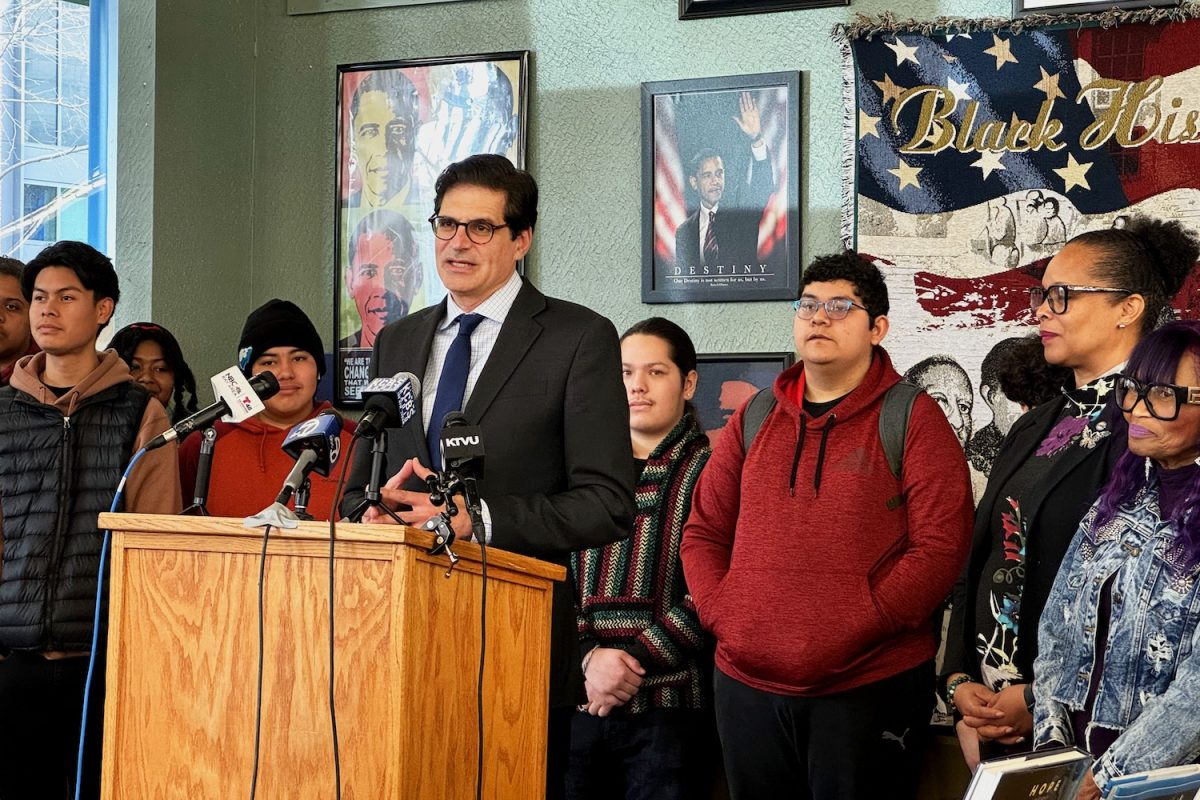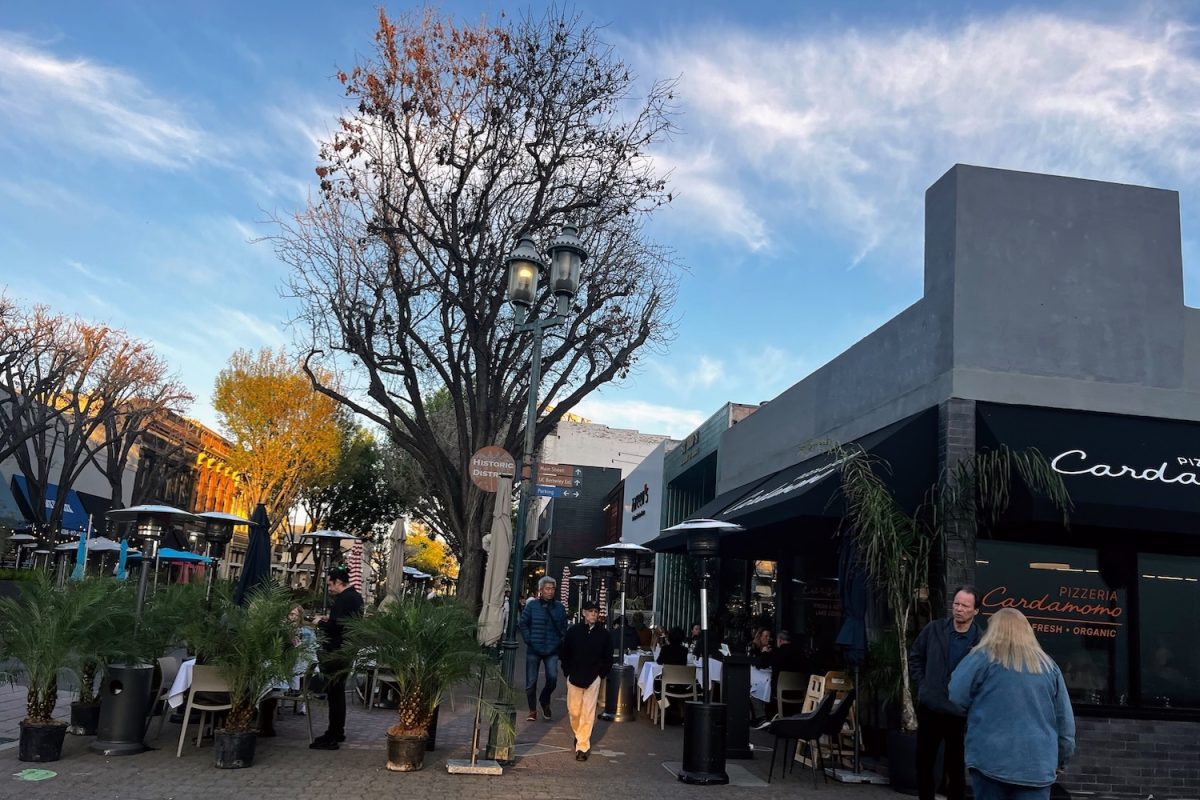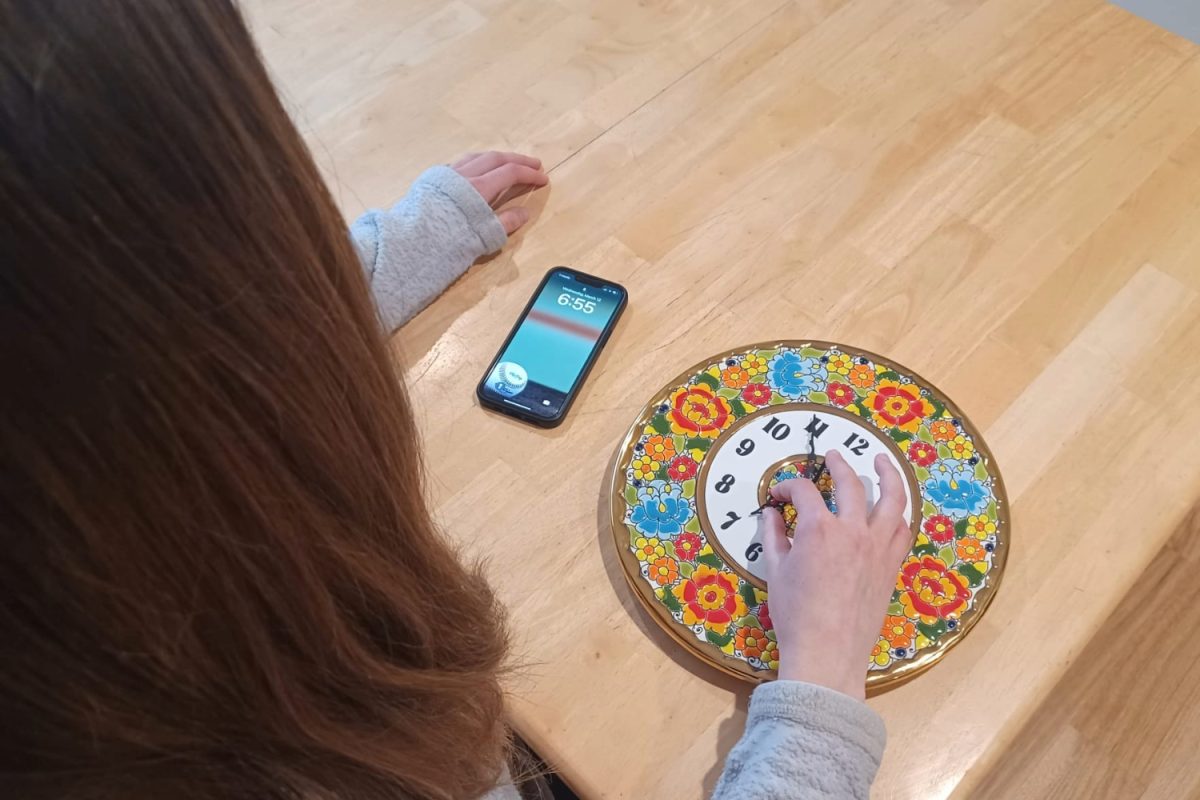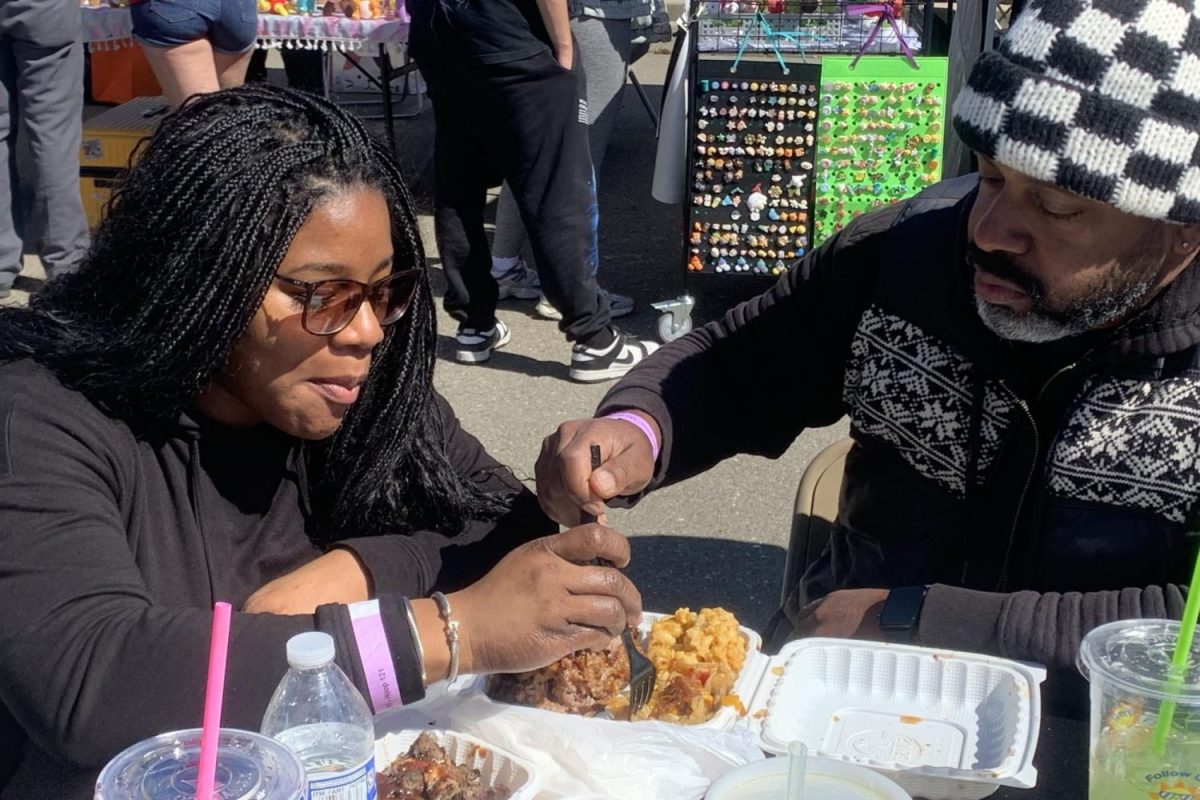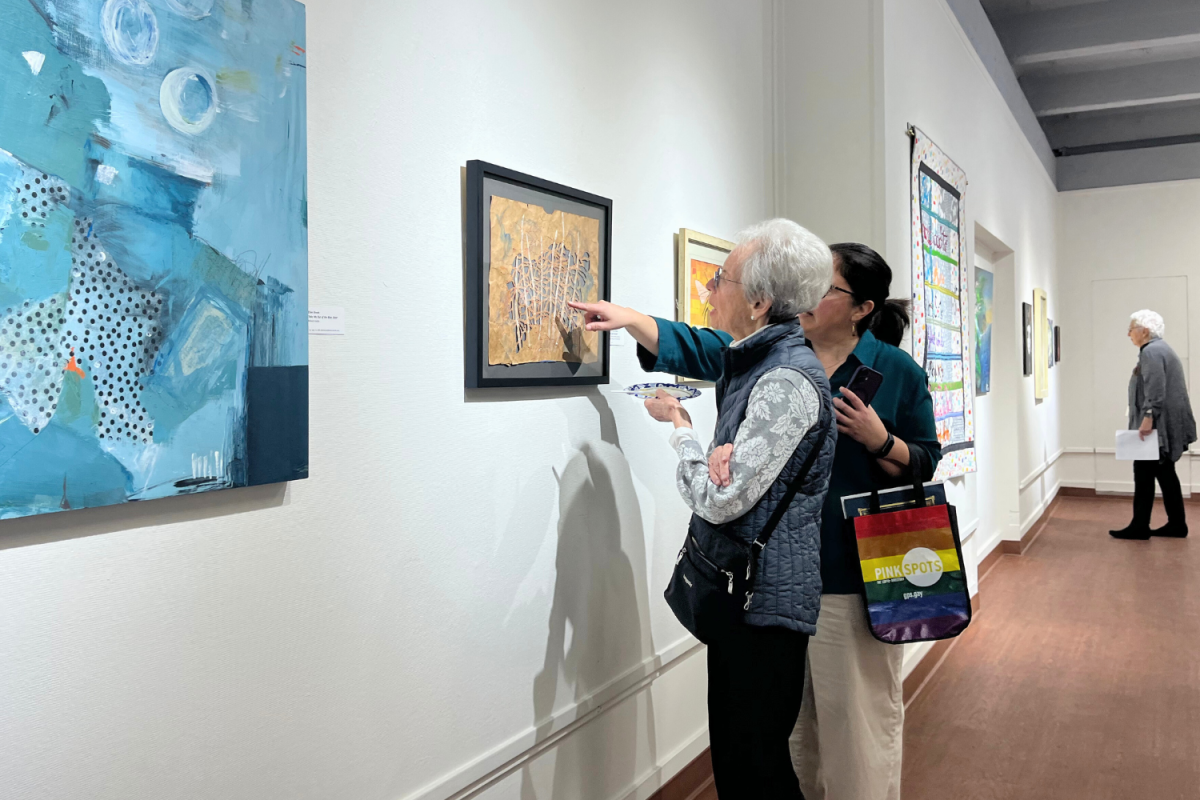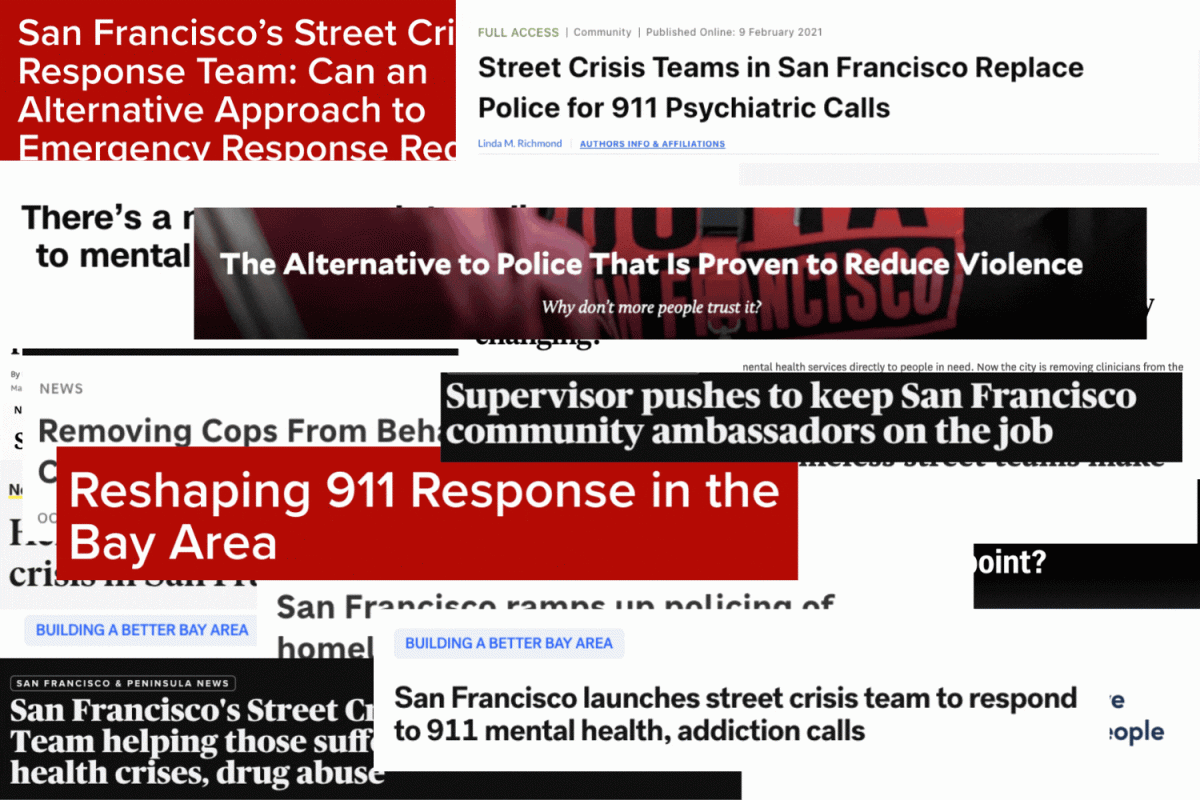California State Sen. Josh Becker of District 13 spoke at a press conference at the Domini Hoskins Black History Museum & Learning Center. Becker’s messages during the conference took place after his recent investment in the Domini Hoskins Museum with the help of California Gov. Gavin Newsom.
Becker’s significant donation, announced on Feb. 23, 2024, grants the Domini Hoskins Museum the possibility of a permanent home at 890 Jefferson Ave. in Redwood City after being a pop-up museum for nearly 30 years. Previously, the exhibition was primarily open during Black History Month and at the San Mateo County Fair in the summer.
“Today is a historic day, the day of great excitement and joy, where I can announce the initial two million dollar investments in the first ever African American History Museum here in San Mateo County,” Becker said.
Carolyn Hoskins, a Belmont resident and the founder of the Domini Hoskins Black History Museum is very grateful for Becker’s support.
“I am so proud and blessed to call 890 Jefferson Avenue home,” Hoskins said.
Becker was also joined by other speakers, such as Lisa Gauthier, a city council member for East Palo Alto.
“It is so important that we have opportunities to look at our history and share our history,” Gauthier said. “If we forget our history and we don’t share it, everyone will forget it.”
According to the World Population Review, in 2024, 18 states will already have laws to varying degrees banning critical race theory. However, California is not one of them. Thus, the museum is a push to continue the teachings of the essential legacies and stories from the past and present of African American history.
“One of the most important things is the learning center, to be able to educate people when you have states like Texas and Florida that are trying to ban books of African American art,” Hoskins said.
Furthermore, the museum’s establishment encourages all cultures to be celebrated and taught throughout the year, especially to the younger generations.
“I strive to tell people it doesn’t matter what race or nationality you are. Be so proud of that. It takes everybody to make America great,” Hoskins said.
According to Becker, the museum’s tangible impact on visitors of all ages made it an easy decision to help provide a permanent space for the museum. To him, his donation offers an experience much more significant than just a new proposed policy.
“I was channeling the voice and the passion that I heard from students across my district, that they wanted to see their stories heard, and that they will see their stories told now through this museum,” Becker said. “I want to be at the schools and telling these stories and the importance of ethnic studies.”
Additionally, students were allowed to use the conference podium to voice their own stories and experiences about the impact the museum has had on them.
“Just walking around here and learning has shown me the influence of Black history and how important it is that everyone has the ability to come here,” said Ben Levy, a junior at Henry M. Gunn High School.
The museum occupies a massive 22,000-square-foot gallery dedicated to the stories and achievements of Black inventors, athletes, and activists showcased in the numerous displays, each created by Hoskins.
Hoskins encourages school groups to take tours of the Black History Museum. C’Nia Brown and Dylan Williams are among the students of the Boys & Girls Clubs of the Peninsula who joined Becker in commemorating the museum.
“The fact that it’s a permanent place means a lot to me. It means I can just come here at any point in time and learn about my Black community and everything that I’ve missed out on,” Brown said.
For many young African Americans, seeing how past Black people have had such an immense influence on America’s history allows them to be inspired and look up to them.
“It felt nice being here, surrounded by my history. I haven’t really learned about it that much, so this will be really helpful in knowing about my roots. I feel like it will be easier to learn about myself, about my family, my history, and things I didn’t know before,” Williams said.
To many, the museum is a space to educate about the monumental Black activists and leaders who have had an immense impact on communities throughout the entirety of the United States.
“We need to celebrate the great work that we’ve brought and we can continue when we continue to bring great things to this country,” Gauthier said.

